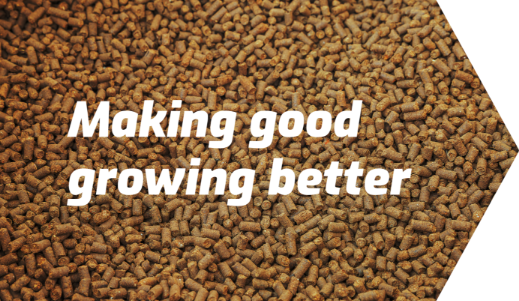
Protecting your investment in sand-based turf
- Posted: Aug 05, 2021
- Author: Nature Safe
- Turf
Most new golf greens and tees are constructed with very porous root zones that are comprised primarily or entirely of sand. And, some golf course fairways have been plated with sand up to 12 inches thick. New athletic fields are also frequently made of sand.
The reason that sand is used for the root zone is to allow for deeper rooting and to provide better drainage following a rain or irrigation. The pore spaces between the sand particles allow better aeration for the roots and it provides an avenue of escape for excess moisture. Overall, this type of construction is very effective, but it can be quite costly.
Organic fertilizers can save the day...except for the ash
Sand-based root zones tend to be less fertile and have a lower concentration of soil microbes. A good organic fertilizer is an excellent choice for this type of situation to build soil microbe populations, which will in turn provide the turf with excellent nutrition. Organics are safe to use because they have a lower tendency to burn the turf. Unfortunately though, some organics can contribute to slowing down the infiltration rate of the root zone and ash is the main culprit.
Ash is defined as what remains after an organic fertilizer is subjected to very high heat to remove the actual organic portion of the material. The ash is comprised of inorganic minerals that are extremely fine textured.
In turf, such a burning off process never takes place. Instead, the soil microbes break down the organic material and leave behind ash plus anything they can’t digest, such as lignin. Now we have not only the ash content to worry about, but also the portion that can’t be digested by the microbes. The ash and other fine textured indigestible materials filter down into the root zone and over time, start to plug up some of the pore spaces between the sand particles.
Many manure type organic fertilizers contain up to 50 per cent ash by weight. This ash comes from the sawdust, shavings and straw that is used as bedding for the animals that produced the manure. Since it’s impossible to separate the bedding from the manure, the entire material is composted and made into fertilizer. In most instances the manufacturer would not want to separate the bedding from the manure because a major portion of the nutrients claimed on the label, especially the potassium, are derived from the bedding material.
Sewage sludge types of fertilizer present a different problem. While these types of products do not normally contain any ash from wood shavings and straw, they do contain ash from other sources. The ash is comparable to extremely fine sand. Some universities have reported finding sewage sludge fertilizers that contain over 30 per cent of this fine sand and ash by weight. And, it’s anyone’s guess as to what this fine sand and ash can do to the infiltration rate of a porous root zone over time if such fertilizers are regularly applied.
Nature Safe to the rescue
Nature Safe has a very low ash content, and it’s very easily digested by the soil microbes without leaving lots of indigestible portions behind. Most of the ash that is found in Nature Safe comes from the sulfate of potash that is used as a potassium source. This portion has to be claimed as ash, but we know that sulfate of potash doesn’t plug up pore spaces. Our 10-2-8 has an ash content of 23 per cent, but without the sulfate of potash it has an ash content of slightly under 9 per cent. Once the sulfate of potash is accounted for, none of the Nature Safe formulations contain more than 10 per cent ash.
The fact that most sewage sludge and manure type fertilizers have very low nitrogen contents compounds the problem. Typically, these types of fertilizer contain 5 per cent or less nitrogen. That would mean that one would have to use twice as much of a 5 per cent N product to apply the same amount of N per unit area than you would if you were using Nature Safe 10-2-8. Therefore, if a manure product with 5 per cent N and 45 per cent ash was used to apply one pound of N per one thousand square feet, you would have to use twice as many pounds of fertilizer to get the same amount of N that would be available in 10-2-8. This means you would be applying nearly ten times as much ash with the manure product as you would with Nature Safe 10-2-8.
Here’s a breakdown
- 20 lbs. 5-2-4 Sustane with 45% ash = 1 lb. N and 9 lbs. ash
- 16.67 lbs. 6-2-0 Milorganite with 27% ash = 1 lb. N and 4.5 lbs. ash
- 10 lbs. Nature Safe 10-2-8 with 9% ash = 1 lb. N and 0.9 lbs. ash
It’s pretty easy to see why Nature Safe is the product of choice for porous root zones even if you don’t take into account all of the other benefits it offers over sludge and manure products. Once the pore spaces are clogged up with ash it’s virtually impossible to get them opened. The best thing to do is to use Nature Safe and to think of it as an insurance policy on your investment.
